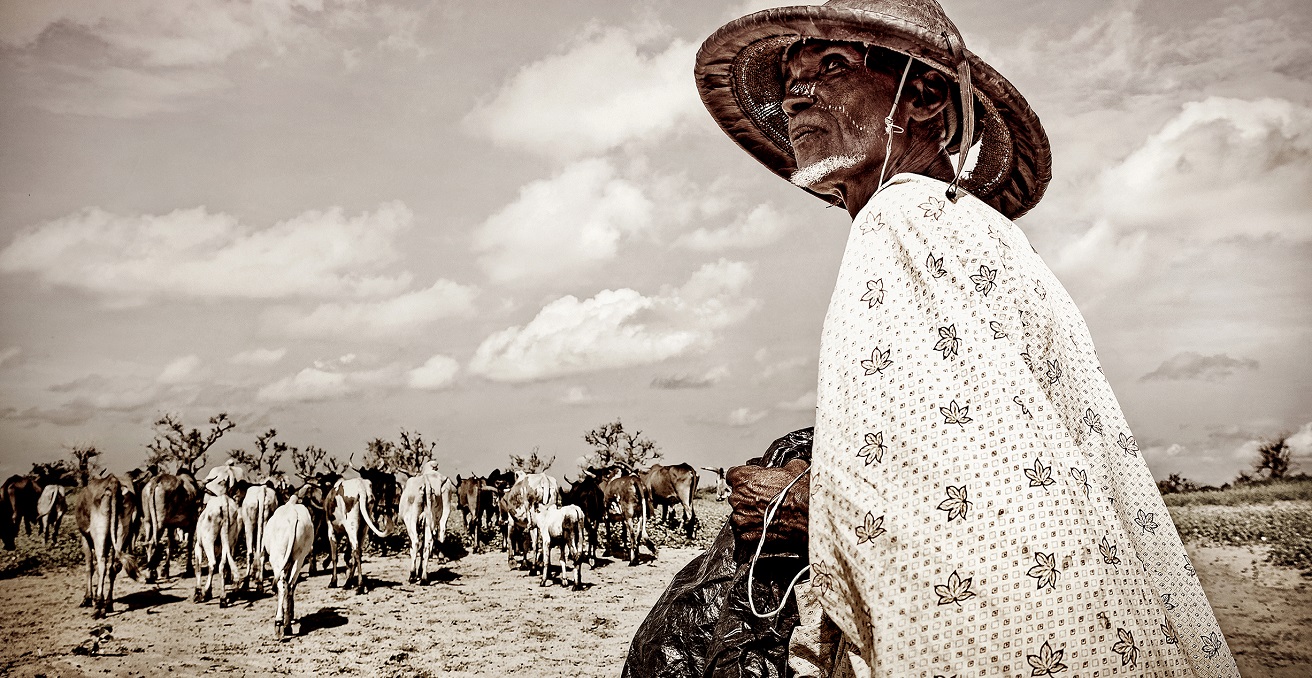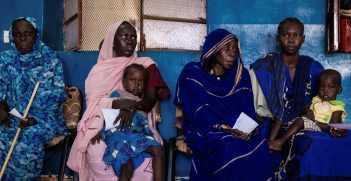When Rain Turns to Dust: The Impact of Conflict & Climate Change

Climate disruptions threaten populations across the globe and will increasingly do so. But climate change is unfair – poor and marginalised populations in developing countries are hit especially hard, and women are too often at the forefront.
This article is part of the “Gender & Humanitarian Action” series run by the International Committee of the Red Cross in partnership with Australian Outlook. The AIIA National Office and the ICRC will be holding a webinar focusing on Gender and Humanitarian Action on Tuesday, March 9. You can register to attend in person or online here.
Nearly two years ago, the International Committee of the Red Cross (ICRC) embarked on a journey to better understand the humanitarian consequences of a changing climate and environment on global communities enduring conflict. At that time, it was still possible to travel to meet people and listen to their stories.
From Mali to Iraq and the Central African Republic, the ICRC listened to people describing the changes they see in their environment and their climate. “The rains of my childhood were different. They came at the right moment and pasture was of good quality. Nowadays, water sources are filled with sand. Rain never comes at the right time and grass is scarce,” recalled Issa, a 61-year-old community leader from northern Mali. In northern Mali, desertification has been accelerating for decades, rains are rare and increasingly unpredictable, and infrastructure is minimal.
People spoke of how the weather has become more unreliable, evoked by the unpredictable nature of droughts and floods. They detailed the dramatic impacts of weather unpredictability on their health, and their food and economic security. They also conveyed a deep sense of loss and disorientation, as they feel that they can no longer recognise their environment or read the weather, and they are simply not equipped to deal with the climate hazards that are an enduring threat.
Together, climate change and conflict make a devastating mix. Of the ten countries deemed most vulnerable and least ready to adapt to climate change, eight are mired in conflict. People enduring conflict already face extreme stress, and any further shock destabilises them. Assets that should help them cope with change, such as state institutions, essential services, social cohesion, livelihoods, or even freedom of movement, are profoundly disrupted by conflict.
In northern Mali, for instance, faced with a difficult season, herders would normally travel further afield with their animals to find water and land for grazing. But years of conflict and insecurity have deterred herders from travelling for fear of being attacked. “Now, we can’t even search for food. We are forced to stay in place or move to cities because of the insecurity,” added Issa.
Unable to draw on state support due to the conflict, the herders can only watch as their cattle – their only assets – become weaker. They are forced to sell them at steeply discounted prices to gain any kind of income. An already poor population becomes poorer.
The effects of this can also be far-reaching. Along with other megatrends, such as demographic growth or rapid urbanisation, they can shape human mobility or access to resources on a continental scale. For instance, desertification in the Sahel and in the Lake Chad region, combined with armed conflict, is having a very localised impact hundreds of kilometres away in the Central African Republic. This leads to upheavals in patterns of transhumance, increased violence, including sexual violence, and a deterioration in the economic and food security of the population.
Conflicts can also profoundly harm the environment on which people rely to survive. Too often, the natural environment is directly attacked or damaged by warfare, which can lead to air, water, and land contamination.
In Fao, southern Iraq, people blame their water and farming problems on the felling of date palms for military purposes during the Iran-Iraq war. They have not grown back. This environmental damage has been compounded by rising temperatures, droughts, desertification, and soil salinisation.
Today, there is a marked increase in sand and dust storms in Iraq – from fewer than 25 days of local dust storms a year between 1951-1990, to some 300 in 2013. This has contributed to transforming fertile soil into desert areas. “Before, rain was falling. Now, dust is falling,” mused one of the ICRC workers.
Climate change is cruel. While it will be felt everywhere, these examples from Mali, the Central African Republic, and Iraq illustrate how its most crippling effects are borne by the world’s most vulnerable. Violence and instability rob communities of the chance to adapt.
And women are at the forefront. This is not because they are intrinsically vulnerable, but because people with a lower socio-economic status are often more vulnerable to shock, as they tend to lack savings and social assets to cope with change. Women are over-represented in that group, just as they are over-represented among small-scale farmers who are particularly vulnerable to climate variability and extremes.
Mothers we met in southern Iraq spoke of their hopes that their children would find a more reliable livelihood than farming. “We advise our children to continue studying and to do something else,” explained one of them. “There is no future for agriculture. We also send our daughters to school.”
Paradoxically, people in wars are not only at the forefront of climate change, they are also among the most neglected by climate action. We must reverse this trend.
Major global efforts are essential to limit climate change and avoid the most disastrous consequences for people and their environment. But this will only limit, not halt, the climate crisis. We urgently need to find ways to help people cope and adapt.
For that, we must reinforce our capacity to develop programmes addressing short and longer-term risks. We must join forces, across the humanitarian sector and beyond, as no single organisation can address these challenges alone. Collectively, we need to focus on limiting people’s exposure by reducing risks and strengthening their resilience to shocks. Once people, systems, and their environment have experienced major losses, recovery is harder. And this is particularly true in times of conflict. Finally, we need to bring on board those who are best placed to ensure that climate action and finance reach communities enduring conflict – from governments to local authorities, international financial institutions, and the private sector.
This is all urgent. The crisis is already costing lives.
Dr Catherine-Lune Grayson is a policy adviser at the International Committee of the Red Cross (ICRC). She is the author of a report on the humanitarian consequences of converging climate risks and conflict, “When rain turns to dust.”
Aurelie Lachant leads ICRC public communication efforts to highlight the humanitarian consequences of a changing climate on communities enduring conflict.
This article is published under a Creative Commons License and may be republished with attribution.





